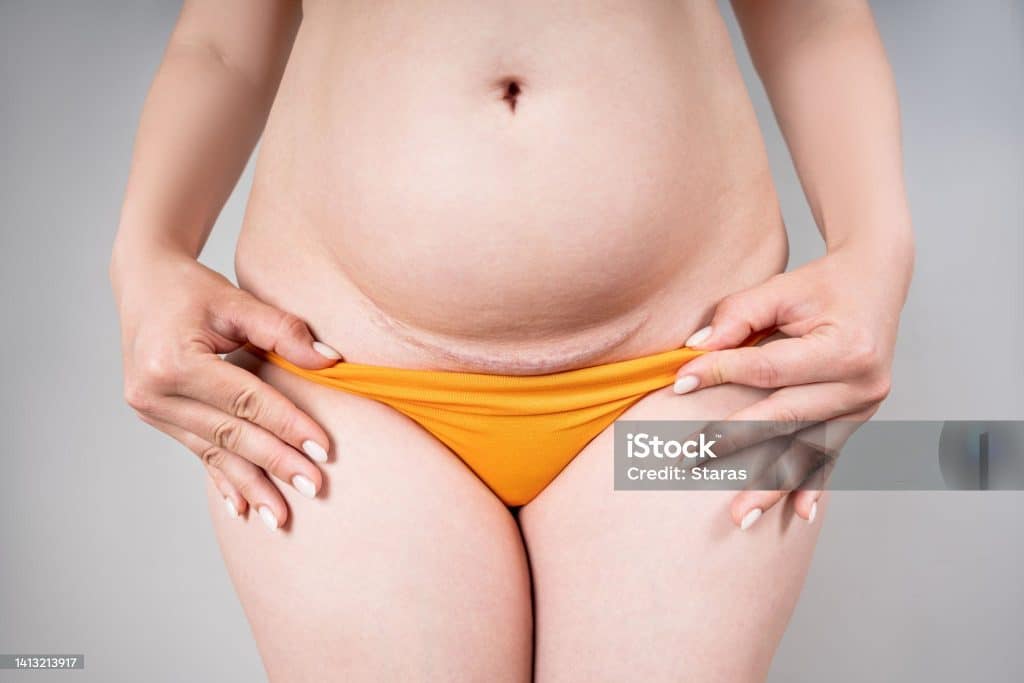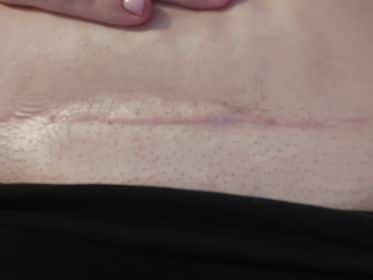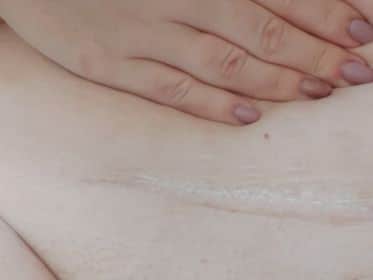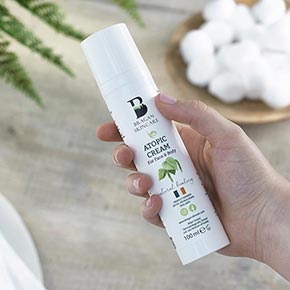Tummy Tuck Scarring: What to Expect and How to Care for It
A tummy tuck, also known as abdominoplasty, can be a transformative procedure. By removing excess skin and fat, a tummy tuck provides a firmer, flatter abdominal area. It’s a popular option for people who want to restore their physique after significant weight loss, pregnancy, or simply to feel more confident in their bodies. However, one natural aspect of the tummy tuck process is scarring. Although tummy tuck scarring may seem daunting, with the right approach and consistent care, scars can fade significantly, and many patients find the results well worth the investment.
In this comprehensive guide, we’ll explore what tummy tuck scars look like, factors that influence scar appearance, and the best ways to care for these scars. We’ll also highlight the benefits of using Bragan Skincare’s Atopic Cream, a product enriched with snail mucin, which can be an excellent addition to your scar care routine, helping the skin to heal more efficiently.

Why Does a Tummy Tuck Cause Scars?
A tummy tuck is a surgical procedure that requires incisions to remove excess skin and fat, and to tighten underlying muscles. These incisions leave scars, which are a natural part of the healing process as the body repairs itself. The body’s response to the surgery-created wound results in the scarring. Here’s how it works:
- The surgeon typically makes an incision horizontally across the lower abdomen, just above the pubic area, during a tummy tuck. An incision may run from hip to hip or be smaller if less skin is removed, depending on the tummy tuck.
- Healing Process: As the skin heals, it produces scar tissue to close the wound. Collagen, a protein that supports skin structure, forms in the area of the incision, resulting in a scar. Initially, this scar appears red or pink, and it may appear raised or thicker than the surrounding skin.
While scarring is inevitable after a tummy tuck, understanding the process and following good scar care practices can lead to a smoother, less noticeable scar over time.
Types of Tummy Tuck Scars
The type of tummy tuck you undergo influences the size and location of the scar:
- Full Tummy Tuck: This is the most common tummy tuck procedure, involving an incision that spans from hip to hip. Additionally, the surgeon may make a small incision around the navel, as surgery often repositions this area.
- Mini Tummy Tuck: This involves a shorter incision, typically on the lower abdomen. When there is only a small amount of excess skin, a mini tummy tuck typically results in a smaller scar.
- Extended Tummy Tuck: This option is for individuals with more extensive skin removal needs. The incision for an extended tummy tuck is longer, potentially extending beyond the hips, covering the lower back and flank areas.
Knowing the type of tummy tuck you are undergoing can help you set realistic expectations about the scar and make a plan for post-surgical care to improve its appearance.
What Does a Tummy Tuck Scar Look Like?
Tummy tuck scars can vary in appearance based on individual healing factors, surgical technique, and post-surgical care. Generally, the scar will look like a thin horizontal line running across the lower abdomen, although it can differ in length and thickness.
- Colour: Initially, scars are red or pink due to increased blood flow in the healing tissue. Over time, as the healing process progresses, the scar will gradually fade to a lighter shade.
- Length and Position: The scar usually sits just above the pubic area, running horizontally from hip to hip. Often, the placement of this scar is sufficiently low to conceal it under most types of clothing.
- Texture: In the early stages, tummy tuck scars may be raised or thicker than the surrounding skin. Over time, they tend to become smoother and flatter, especially with consistent care.
While the scar will not disappear completely, it becomes significantly less noticeable with good care and as your body goes through its natural healing process.
Factors That Affect Tummy Tuck Scar Appearance
Not all scars are alike, and several factors influence how noticeable a scar will be:
- Genetics and Skin Type: Genetics play a significant role in how your skin heals and scars. Some people are more prone to developing raised scars, like keloids, while others may heal with finer, flatter scars.
- Surgical Technique: The skill of your surgeon matters. A skilled surgeon can position the incision to minimise scarring and place it low enough to remain hidden by clothing.
- Post-Surgical Care: The way you care for your scar in the months following surgery makes a big difference in the scar’s appearance. Proper scar care, including keeping it moisturised and avoiding sun exposure, can help improve the outcome.
Being mindful of these factors can guide your approach to tummy tuck scar care and help you achieve the best possible results.
The Body’s Natural Process for Scar Healing
Scarring is a multi-phase process, as the body works to repair and rebuild the skin:
- Inflammatory Phase: This phase occurs immediately after surgery and lasts for several days. Blood cells rush to the area to protect against infection, causing redness and swelling.
- Proliferative Phase: Over the next few weeks, the body produces collagen to close the wound. New blood vessels form, and the scar appears red and raised as collagen builds up.
- Maturation Phase: This final phase can take months or even years, as the body breaks down excess collagen and refines the scar tissue. The scar gradually flattens and lightens during this stage.
By supporting your body’s healing with good scar care, you can influence how your scar develops during these stages.
Essential Tips for Minimising Tummy Tuck Scarring
Though scarring is a natural part of the healing process, there are effective ways to minimise its visibility:
- Follow Post-Operative Instructions: Your surgeon’s aftercare instructions are crucial for proper healing. This may include advice on cleaning the area, avoiding specific activities, and applying any recommended ointments.
- Avoid Sun Exposure: UV rays can darken scars and delay healing. Protect your scar from the sun by wearing clothing that covers the area or applying high-SPF sunscreen once the incision has fully healed.
- Stay Hydrated and Eat a Healthy Diet: Drinking plenty of water and eating a balanced diet rich in vitamins, minerals, and antioxidants supports your body’s ability to heal efficiently.
- Use a Quality Moisturiser: Keeping the scar moisturised helps reduce dryness, itchiness, and potential scar thickening. A moisturiser like Bragan Skincare’s Atopic Cream, enriched with snail mucin, is ideal for providing deep hydration and promoting healing.
With these steps, you can improve the appearance of your scar and support healthy healing.


The Benefits of Snail Mucin in Scar Care
Snail mucin, a natural secretion from snails, is known for its powerful skin-repairing properties. It’s rich in beneficial components that make it ideal for scar care:
- Hyaluronic Acid: Snail mucin is high in hyaluronic acid, which helps the skin retain moisture. This is essential for scar tissue, as hydrated skin is less likely to feel tight or uncomfortable.
- Glycolic Acid: This gentle exfoliant promotes skin cell turnover, which can help reduce the thickness of scar tissue and improve texture over time.
- Collagen and Elastin: These proteins support the skin’s elasticity and strength, helping scars heal with a smoother appearance.
By incorporating snail mucin into your skincare routine, you can take advantage of its natural benefits to keep your scar hydrated, soft, and smooth.
Why Bragan Skincare’s Atopic Cream Is Ideal for Tummy Tuck Scars
Bragan Skincare’s Atopic Cream, enriched with snail mucin, is formulated specifically for sensitive and healing skin, making it an ideal choice for post-surgical scar care. Here’s why it’s so effective:
- Deep Hydration: The hyaluronic acid in snail mucin locks in moisture, keeping the scar tissue soft and reducing the likelihood of raised, hardened scars.
- Soothing Relief: Post-surgery skin is prone to redness and inflammation. Bragan Skincare’s Atopic Cream helps reduce irritation, making the healing process more comfortable.
- Enhanced Skin Repair: By promoting collagen production, snail mucin supports the skin’s natural repair processes, helping the scar fade and become less noticeable over time.
Including Bragan Skincare’s Atopic Cream in your routine can make a significant difference, providing your skin with the gentle, effective care it needs to heal beautifully.
Practical Steps to Care for Your Tummy Tuck Scar
For the best results, follow a consistent scar care routine. Here’s a step-by-step guide to help you care for your tummy tuck scar:
- Clean the Area Gently: Use a mild, fragrance-free soap to cleanse the area, and pat it dry with a soft towel. Avoid scrubbing or rubbing the scar, as this can cause irritation.
- Apply Bragan Skincare’s Atopic Cream: Using clean fingers, apply a thin layer of the cream to the scar twice daily. The snail mucin will help keep the scar hydrated and support natural healing.
- Once the scar has fully healed, gently massaging it can enhance circulation and aid in the breakdown of excess collagen. Aim for small, circular motions for 5-10 minutes daily.
- Wear Compression Garments if Recommended: Compression can help reduce swelling and support proper scar formation in the early stages of healing.
These steps can improve the appearance of your scar and encourage smoother, softer skin.
Common Questions About Tummy Tuck Scarring
Let’s answer some frequently asked questions about tummy tuck scars:
1. How long does it take for a tummy tuck scar to heal?
Complete healing can take 12-18 months, depending on your body’s natural healing process. Over time, the scar will gradually soften and fade.
2. Will my scar completely disappear?
While scars don’t completely vanish, with consistent care, you can make them significantly less noticeable. Bragan Skincare’s Atopic Cream can help reduce the appearance of scars over time.
3. Can I wear a bikini after a tummy tuck?
Yes! Swimwear typically covers most tummy tuck scars due to their low positioning. With good care, your scar should fade, helping you feel confident in your bikini.
4. When should I start applying scar creams?
Once your incision is fully closed and your surgeon approves, you can begin applying scar cream. Bragan Skincare’s Atopic Cream is a great option, but consult your surgeon about the right time to start.
5. Are there any foods that help with scar healing?
Yes. A diet rich in vitamins A, C, and E, as well as zinc and omega-3 fatty acids, can support skin health and aid in healing.
Moisturising and Scar Care: The Role of Hydration
Moisturising is essential for scar care. By keeping the scar hydrated, you can reduce dryness, tightness, and irritation, all of which can impede the healing process. Bragan Skincare’s Atopic Cream provides:
- Moisture to Prevent Tightness: Hydrated scar tissue is softer and more pliable, reducing the risk of raised or thick scars.
- Relief from Itchiness: The cream’s soothing properties help relieve itching, making the healing process more comfortable.
- Nourishment for Smoother Skin: Regular use promotes smoother skin texture and a less noticeable scar.
Adding this cream to your daily routine is one of the most effective ways to care for your scar.
Long-Term Benefits of Consistent Scar Care
Scar care offers benefits beyond aesthetics. A consistent routine supports comfort, confidence, and optimal healing:
- Less Visible Scars: With proper care, scars become lighter and flatter, making them less noticeable.
- Improved Skin Texture: Keeping the skin around the scar moisturised and massaged helps maintain a soft, smooth texture.
- Increased Confidence: Caring for your scar supports healing, which can improve confidence and satisfaction with your tummy tuck results.
Investing time in scar care is a commitment to yourself, and with patience and dedication, you’ll see meaningful results.
Conclusion
Tummy tuck scarring is a natural part of the recovery process, but with the right approach, you can help your body heal beautifully. A consistent care routine, including Bragan Skincare’s Atopic Cream, can make a significant difference in how your scar looks and feels. This journey requires patience and consistency, but the results—a smoother, less noticeable scar—are well worth the effort.
With each day, you’re giving your body the support it needs to recover and reveal the best version of yourself.
Atopic Skin Repair Cream
Bragan Skincare Snail Mucin Atopic Cream At Bragan Skincare, we believe in doing things differently. Our Snail Mucin Atopic Cream isn’t just another product on the shelf—it’s a promise to your skin. Powered by the unmatched healing properties of pure snail mucin, this cream is specially crafted to soothe redness, calm irritation, and restore balance to even the most sensitive skin. Perfect for those suffering with Eczema, Psoriasis. Dermatitis and many other skin condition. Why snail mucin? Because it works. Packed with naturally occurring allantoin, glycolic acid, and peptides, it’s a game-changer for reducing redness, promoting repair, and deeply hydrating…
Featured Bragan Skincare Products
-
€39.99 – €100.00Price range: €39.99 through €100.00Select options This product has multiple variants. The options may be chosen on the product page
-
€100.00Select options This product has multiple variants. The options may be chosen on the product page


